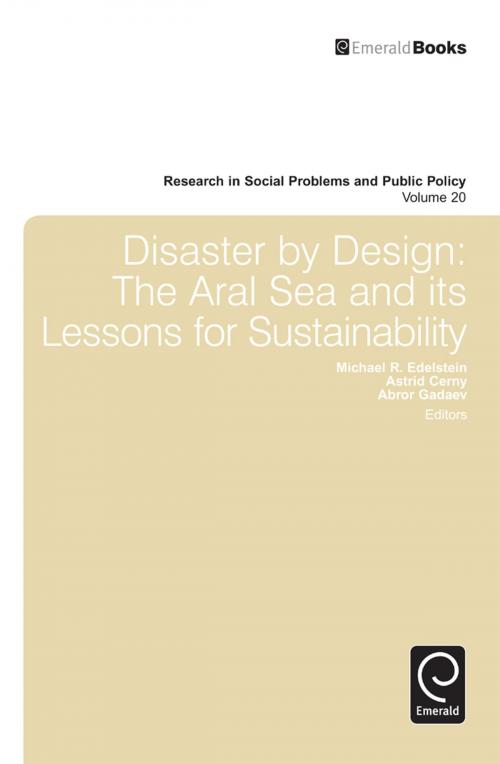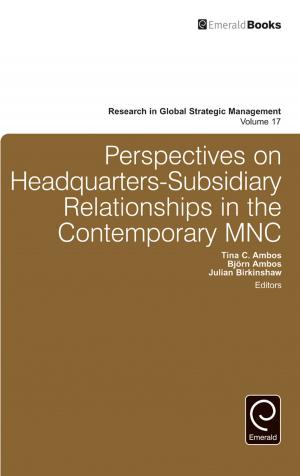Disaster by Design
The Aral Sea and Its Lessons for Sustainability
Nonfiction, Science & Nature, Nature, Environment, Natural Disasters, Ecology| Author: | ISBN: | 9781781903766 | |
| Publisher: | Emerald Group Publishing Limited | Publication: | November 27, 2012 |
| Imprint: | Emerald Group Publishing Limited | Language: | English |
| Author: | |
| ISBN: | 9781781903766 |
| Publisher: | Emerald Group Publishing Limited |
| Publication: | November 27, 2012 |
| Imprint: | Emerald Group Publishing Limited |
| Language: | English |
Disaster by Design: The Aral Sea, Lessons for Sustainability addresses the impacts of the Aral Sea disaster. The virtual disappearance of what was the world's fourth largest inland body of water was neither natural nor accidental. It was the result of deliberate policy decisions. The sea's disappearance is hardly the entire disaster. Instead, we find an accumulation of cascading effects, beginning with the decision to grow cotton, reached remotely in Moscow that altered the farming practices surrounding the Aral Sea. Unsustainable choices resulted in soil salinization, water pollution and toxic blowing sands, impacting the entire bioregion and beyond. A remote island was used to test biological weapons. Uzbekistan, most notably Karakalpakstan, was the autonomous republic at the epicenter of the disaster. Sustainable prospects exist, including renewable energy, permaculture and strengthening the social fabric amidst poverty and ecological collapse. This volume of Research in Social Problems and Public Policy is essential reading for everyone concerned with averting environmental disaster and instead creating livable, sustainable communities. Disaster by Design is a clarion call and an insightful study of Central Asia today.
Disaster by Design: The Aral Sea, Lessons for Sustainability addresses the impacts of the Aral Sea disaster. The virtual disappearance of what was the world's fourth largest inland body of water was neither natural nor accidental. It was the result of deliberate policy decisions. The sea's disappearance is hardly the entire disaster. Instead, we find an accumulation of cascading effects, beginning with the decision to grow cotton, reached remotely in Moscow that altered the farming practices surrounding the Aral Sea. Unsustainable choices resulted in soil salinization, water pollution and toxic blowing sands, impacting the entire bioregion and beyond. A remote island was used to test biological weapons. Uzbekistan, most notably Karakalpakstan, was the autonomous republic at the epicenter of the disaster. Sustainable prospects exist, including renewable energy, permaculture and strengthening the social fabric amidst poverty and ecological collapse. This volume of Research in Social Problems and Public Policy is essential reading for everyone concerned with averting environmental disaster and instead creating livable, sustainable communities. Disaster by Design is a clarion call and an insightful study of Central Asia today.















